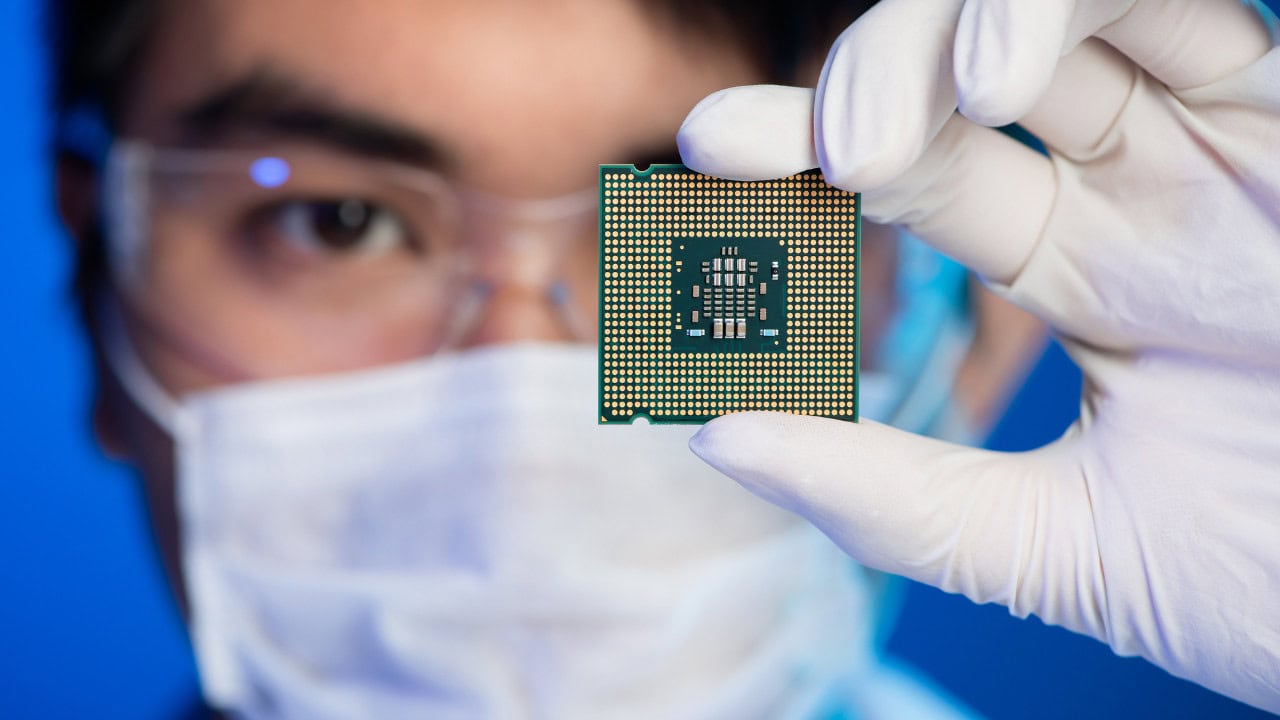In 2023, over 50% of US patients mentioned ease and convenience as key reasons for choosing virtual doctor appointments over in-person visits. Providers use data obtained from patients and medical tests to manage treatment, detect at-risk individuals, and automate administrative processes. Drug researchers develop new medicine faster and better assess its risk/benefit ratio. These are just a few ways technology affects the field out of many innovative ones.
I decided to overview the digital trends in healthcare based on Empeek’s practice, global research, market stats, and adoption level. Check current and upcoming technology trends in healthcare to be better prepared for market challenges and upgrade your systems in time.
Healthcare Technology Market State
Before we discuss technology healthcare trends, let’s review the state of today’s market. The healthcare industry is experiencing significant changes, with 70% of healthcare leaders making tech one of the top priorities. Why? Because smart digital tools are changing how care is delivered, making it faster, easier, and more affordable. Automation reduces repetitive tasks by half for billing teams and gives nurses 20% more time with patients. Besides, apps can track health from home and let patients talk to a doctor without leaving a couch. This helps redesign healthcare around convenience and better access, which is crucial for chronically ill patients or those living in remote areas.
Investing in technology can help bridge the gap in rural areas by making care easier to reach, customizing treatments, and encouraging healthier lifestyles. Health inequalities, like differences in care based on demographic factors, cost the US around $320 billion every year. If nothing changes, that number could reach $1 trillion by 2040.
What about virtual care usage and its popularity among patients and clinicians? A striking 94% of patients are open to virtual doctor visits, but nearly half of healthcare organizations provide fewer virtual options than they did in 2022. This is a missed opportunity, especially with a growing demand from young people who rely on digital tools more than previous generations. 43% of millennials and 33% of Gen Z shared that they would change doctors who don’t offer virtual care. Virtual care gained popularity for its convenience. 64% of users like flexible booking options, while 44% positively assess the reduction of travel to the doctor’s office.
Digital healthcare is becoming our present, and organizations that implement new technologies and meet patient expectations are more likely to lead the way. Organizations at the forefront of healthcare innovation have a clear advantage over those slow to adopt new technologies.
12 Healthcare Technology Trends You Shouldn’t Miss
For healthcare leaders, keeping up with healthcare technology trends is key to staying efficient, secure, and ahead of the curve. Ignoring innovation means struggling to meet the demands of modern care. From gene-editing tools for utmost treatment precision, 3D-printed implants made to fit each patient perfectly to smart systems powered by AI, IoT, and blockchain, healthcare will become more patient-centered. Explore healthcare technology trends that define the next steps in the medical care revolution.
Consumerization of Healthcare Services
Consumerization aims to integrate healthcare tools within patients’ existing routines. It prioritizes user-friendly experiences and demands that health solutions catch up with patients’ needs and habits. This approach contributes to healthcare app adoption — the fewer steps a patient takes, the more likely they are to use the software. Healthcare providers should also ensure a simple representation of health data, empowering users to make informed decisions.
A central challenge that consumerization can solve is bridging the gap between disease management apps and the engagement of chronically ill patients who might not comply with treatment plans. Passive health monitoring and integration of such apps into the healthcare system can increase the effectiveness of disease management. The key is to combine consumer-driven tools with clinical efficacy and create simple solutions that fit into daily life to make it easier for patients to take an active role in their treatment.
Federated Learning for Secure AI Training
Federated learning is a new way for healthcare organizations and research centers to collaborate without risking patient privacy. This is one of the essential trends in healthcare technology since it eliminates sharing raw, confidential data. Instead, each institution trains AI models using their own data and servers. After that, they only share the results of a model’s training with a central server. Different organizations can access valuable knowledge while sensitive information remains protected. For instance, federated learning is used for training predictive models leveraged in disease detection. Researchers can update medical knowledge and comply with data security standards like HIPAA and GDPR. This approach minimizes privacy violations and helps medical teams create accurate AI tools faster without compromising patient safety.
Use of Public Cloud Services and Cloud-Based Analytical Platforms
New services that generate, store, and process data need a robust system to ensure efficiency, safety, and interoperability. Cloud and hybrid cloud solutions have become a hot trend in healthcare businesses because they have better performance than on-premises infrastructure in terms of scalability and maintenance. The cloud computing market size will reach $45.59 billion in 2025.
Whether it’s a medical IoT, EHRs, or connected devices, governments demand compliance with security practices and industry-accepted standards. Digital healthcare technology trends like cloud platforms require healthcare organizations to adhere to HIPAA and HITECH Act in the US and GDPR in Europe to protect patient data. You must also ensure security by following the FDA’s cybersecurity requirements for medical devices and the IEC 62304 standard for medical device software development.
Your next read: Guide to Custom Healthcare Software Compliance: Key Rules and Standards
AI/ML for Enhanced Diagnostics and Treatment Plans
AI is a leading healthcare technology trend that will remain dominating for years. It makes medical services more effective, supplying healthcare teams with pre-analyzed patient data and tips. One of the tested models, VGG16, correctly identified breast cancer 94% of the time. It also had 89% precision with a minimal level of false positives. Another model, DLA-EABA, used MRI images and achieved 97.2% accuracy and 98.3% sensitivity in detecting breast cancer based on MRI scans.
Recently, researchers developed a new AI method to predict who is likely to develop type 2 diabetes within five years based on regular health check-up data. The study analyzed people from South Korea, Japan, and the UK. The ML model reached a balanced accuracy of 72.5% in predicting future diabetes risk. The researchers highlighted that people with a higher risk of diabetes based on model predictions were more likely to die earlier, which shows how crucial early risk detection can be. Using simple health tests and AI, clinicians can detect high-risk people and take steps to prevent disease.
Besides, clinicians can rely on AI for personalized treatment plans. When analyzing patients with chronic heart disease (CHD), AI checks medical history, lifestyle habits, and environmental factors and provides informed treatment recommendations to clinicians. This improves diagnostics and helps doctors choose treatments that fit the person’s needs. Individual treatment plans allow for improved health outcomes as they include specific health-related data at the individual level.
Read also: Top 12 Real-World Artificial Intelligence (AI) Applications in Healthcare
Internet of Medical Things Adoption
Of course, when talking about current technology trends in healthcare, we must mention the Internet of Medical Things (IoMT). It’s the combination of software that transmits, shares, and processes data from connected devices. With IoMT, doctors can measure the vital factors of patients without the latter visiting the office in person. The hospital administration can manage the patient flow and bed availability while patients get reminders and statuses about their health. Let’s take smart inhalers for asthma or COPD as an example. This IoMT device monitors patient usage patterns to improve adherence to the treatment plan and provide data for personalized management, ultimately reducing hospitalizations.
Another effective device is QDG-Care, an innovative IoMT system for Parkinson’s disease (PD) monitoring. It enables real-time assessment of motor symptoms via a portable device and a mobile app. The system algorithms analyze movement data to generate valid metrics accessible to clinicians in an EHR-integrated dashboard. A pilot remote trial demonstrated 100% patient compliance with testing on at least 16 out of 30 days per month, a crucial requirement for remote monitoring reimbursement. The system can track medication response and disease progression, which confirms IoMT’s potential to improve PD care.
Empeek has a rich portfolio of developing software for IoT that can support more than 10k users, was FDA-approved, and detects heart issues in real time. Reach out for a free consultation and references.
Wearables and Implanted Devices
Fitness trackers, pulse oximeters, pacemakers, and other wearable and implanted devices help care providers and patients monitor vital signs. For instance, implantable cardioverter-defibrillators (ICDs) replace the function of the heart’s electrical system, identifying arrhythmic events and delivering electrical shocks to restore normal human heartbeat.
When such tools are connected to the network that analyzes the performance of the devices, doctors can assess the patient’s health condition, schedule the required device diagnostic, and receive signals when the parameters get abnormal to initiate preventive treatment and save the patient’s life. For example, patients with low comorbidity had a 46% lower risk of dying if using ICD compared to a similar group of people without ICD. Here’s another example of an AI-powered platform that enhances real-time heart monitoring by leveraging machine learning and cardiologist expertise based on a large dataset. Empeek has built a system that automates the classification of heart issues and processes heart events based on the set parameters. This solution overcomes the limitations of manual monitoring, leading to improved treatment and accuracy in cardiac analysis.
Telehealth Gains Governmental Support and Keeps Growing
From a smartphone app allowing round-the-clock healthcare assistance to medical platforms for video monitoring and conferences — telemedicine solutions are plenty. Even though 94% of patients would like another virtual doctor visit after the first one, many healthcare providers aren’t meeting the demand. Nearly half offered the same or even fewer virtual visits in 2023 compared to previous years. There’s a gap between patients’ requirements and telemedicine availability. However, this also creates an opportunity for developing personalized telehealth software, especially since the market is expected to reach nearly $181 billion by 2030.
Besides, technology trends in the healthcare industry have powerful government support. The US government is now backing telehealth development with numerous policies to make virtual care more accessible. For example, Medicare patients can request virtual visits for issues unrelated to mental health during September 30, 2025. Federally Qualified Health Centers (FQHCs) and Rural Health Clinics (RHCs) support the same service. As per Medicare’s previous policies for behavioral and mental health appointments, there will be no need for physical visits. The government allows audio-only calls if patients can’t or don’t want to use video. With continued government support, telehealth will keep growing fast.
VR and AR For Training and Treatment
Virtual and augmented realities are used to teach the new generation of doctors and help those on duty perform better. Two fields that benefit from VR and AR the most are surgery and oncology, as they allow the replication of the exact form of organs, thus providing specialists with better imaging. VR-assisted surgeries increase the efficacy of correctly identifying the organ’s position and real dimensions, thus minimizing unnecessary cuts.
In diagnostics, tools like Google’s AR microscope use AI to help clinicians spot cancer cells faster by highlighting problematic areas. AR can even project 3D scan images right onto the patient’s body, like X-ray vision. This new trend in healthcare technology can show medical professionals the accurate location of a patient’s veins for IV injections. In terms of physical therapy, AR can make rehabilitation a lot more fun and effective for patients. They can play interactive games that keep them motivated and engaged through challenging exercises. AR also gives instant feedback on patient’s movement accuracy, lowering their chance of getting hurt.
Using Tech to Improve Women’s Health
In 2023, out of $41.2 billion in medical venture funding, only 2% were allocated to women’s health. In biopharma research, medical systems spend only 4% on conditions that affect women specifically.
As a part of the latest trends in healthcare technology, these statistics start to change since more people speak up about the differences in care between men and women. Healthcare organizations realize women’s health is an opportunity for improved medical care outcomes and market growth. There are some positive signs of change even though they are slow. The researchers expect the women’s health market to reach $60 billion by 2027.
Wearables and digital health apps let women monitor their menstrual cycles and track health after menopause, such as by predicting hot flashes during sleep.
Startups also create smart, digital tools that go beyond reproductive health and contraception. For example, with AI-powered imaging, clinicians can detect breast cancer earlier and provide more accurate predictions. Leveraging AI and machine learning, healthcare professionals can better understand how diseases show in women. For example, did you know that chest pain during a heart attack is a symptom inherent to men? Women’s symptoms would include nausea, back pain, and impaired breathing.
Personalized Care
Personalization in healthcare technology means patients get medical services based on the data gathered from IoMT, medical devices, and wellness apps. Everyone also has a secured profile with physical characteristics, medical prescriptions, diagnoses, medical analyses, scheduled doctor appointments, etc.
The Medical University of South Carolina created a Stroke Belt program that has cut hospital stays for ischemic stroke patients by over 7%, thanks to smarter scheduling and digital twin creation. The digital twins approach includes using accurate test results to generate a digital version of the patient and develop a personalized approach that considers individual health characteristics. Such a level of personalization ensures that every patient gets the right treatment as soon as possible with minimal risks of complications.
Generative AI for Virtual Care
75% of top healthcare companies have tried generative AI or seek to use GenAI more widely. 92% of healthcare organization leaders believe GenA can make work more efficient, while 65% think it will help them make informed decisions faster.
One of the best ways to improve communication with patients is to use generative AI to create smart virtual assistants. These AI agents can handle appointment scheduling and provide health tips based on the patient’s EHR data. For example, GenAI assistants can remind patients with diabetes about a check-up and nudge them to choose a healthier diet. This can help people stay on track with their treatment and feel more in control of their health without putting an additional load on medical specialists.
Empeek builds custom ML algorithms and can help with creating smart virtual assistants that increase patient’s satisfaction score and treatment results. Contact us to get a free consultation.
Empeek builds custom ML algorithms and can help with creating smart virtual assistants that increase patient’s satisfaction score and treatment results.
Get a free consultationGenAI can also help clinicians manage documents and keep important notes. There is no need to make notes manually since doctors can use speech recognition tools that automatically turn conversations into well-structured medical records. During a doctor’s conversation with a patient, AI algorithms record and transcribe details, generating an accurate report. Clinicians get more time to care for patients, which improves treatment outcomes and patient satisfaction.
Expanded Functionality of EHR Systems
Healthcare organizations are reviewing their conventional ways of using EHR systems to manage patient data. 19% of respondents are unhappy with their current EHRs and while 70% of satisfied respondents admitted that their systems aren’t ready for future goals.
What are healthcare providers doing about it? More than 50% of surveyed organizations want to increase care convenience, while 61% plan to encourage the use of patient communication systems, like telehealth. Online appointment booking is also a priority for healthcare companies. For example, Geisinger Health applied a biometric registration system, which nearly 80% of patients liked since it simplified checking in.
Still, current EHRs are hard to use, and clinicians struggle with time-consuming documentation. That’s why technological trends in healthcare shape future EHRs to focus on user-centered design and enhance prevention and patient wellness, not just keep records. They must help patients follow their health plans, using personalized care suggestions and connecting them with clinicians. Many healthcare providers also integrate medical record systems with smart tools like clinical decision support, advanced analytics, and AI-powered recommendations to expand their functionality.
Genomics & Precision Medicine
Healthcare technology trend you should expect in upcoming years include genomics modifications and precision medicine. CRISPR, a tool that allows scientists to modify certain parts of the genome, is changing cancer research and precision medicine through pharmacogenomic screening. This method helps scientists uncover the genetic reasons why certain cancers resist treatment. By using CRISPR to edit genes in cancer cell lines, researchers can quickly detect genetic changes that allow cancer cells to survive even the strongest treatment. The screening approach can help pharma researchers tackle hard-to-treat cancers whose resistance often undermines therapies.
One example is GenMedPro, a precision medicine software that helps healthcare providers manage medication plans by analyzing the interaction between a patient’s genes and current medications. The system combines data about how the body processes drugs with potential drug-to-drug interactions, providing potential medication risks. The software specifies genetic test results and current prescriptions, allowing providers to spot safety concerns, suggest safer alternatives, and adjust treatment plans quickly.
Custom Prosthetics and Implants
Technology trends in healthcare also encompass custom prosthetics and implants based on innovative 3D modeling and printing. Unlike traditional manufacturing methods, 3D printing brings design freedom, paving the way for prosthetics and implants tailored to the unique anatomy of each patient. Software is an essential component of custom prosthetics systems as it enables rapid prototyping, the creation of personalized design, and the simulation of prosthetic movement.
![Top 12 Healthcare Technology Development Trends [Full Overview] 5](https://empeek.com/wp-content/uploads/2025/05/Prosthetics-1.webp)
One of the major benefits of 3D printing technology is efficient material usage. Scientists can design lightweight solutions that use just the right amount of material. This leads to more comfortable prostheses and reduces manufacturing costs, usually making up over 40% of total expenses.
Medical implant development benefits from 3D printing, too as scientists are increasingly applying it to orthopedic solutions such as bone plates, spinal implants, and joint replacements. These personalized implants offer better fit and internal structures that mimic natural bone. This boosts osseointegration, the vital process where the implant and the bone fuse together.
Consider Empeek as Your Trusted Partner
Our company focuses on medical software development, helping organizations create custom solutions and integrate existing tools. Whether you face specific bottlenecks in your medical facility’s operations or want to innovate care with software, we can help.
Final Thoughts
The future of healthcare tech is all about putting patients first, connecting data securely, and using smart automation to improve care. If more patients use wearables and health apps, their compliance and engagement with treatment plans will increase, improving health outcomes. Technology trends in the healthcare industry, like federated learning and cloud platforms, are tackling concerns around data privacy and making it easier to scale digital services. AI and ML, especially GenAI, change how clinicians diagnose, treat, and support patients remotely.
Many healthcare organizations are already implementing some of these technologies, and if you want to keep up, you should follow the trends. Empeek is ready to assist you with software development and integration. Contact our team today, and let’s discuss how we can help your business to add value and offer more accessible, accurate, and affordable care.
Read also:
- Healthcare Software Development Guide with Examples
- Top 10 Healthcare Software Development Companies
- Guide to Custom Healthcare Software Compliance: Key Rules and Standards
- How Do Medical IoT Devices Improve Patient Care? Key Examples








